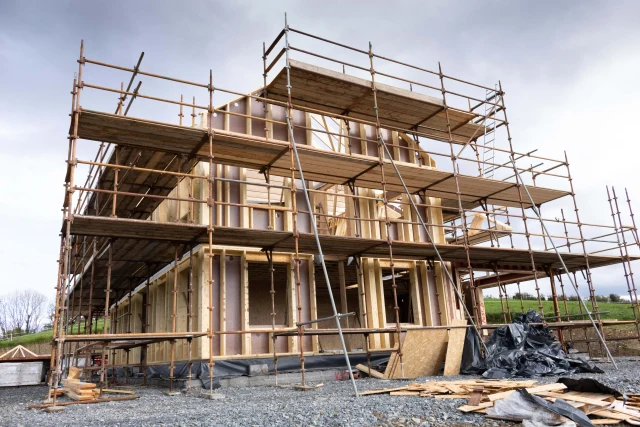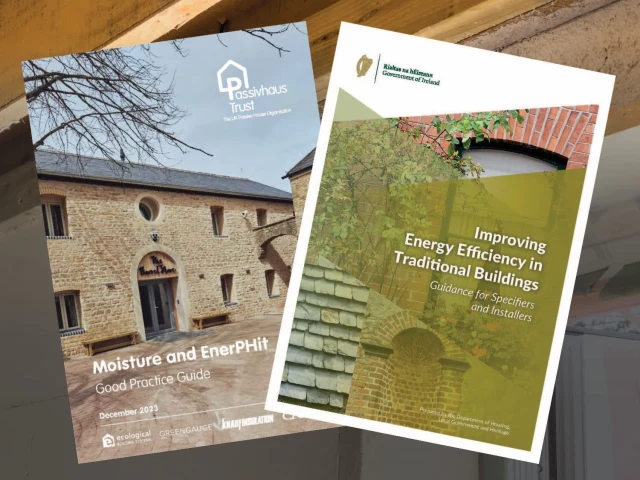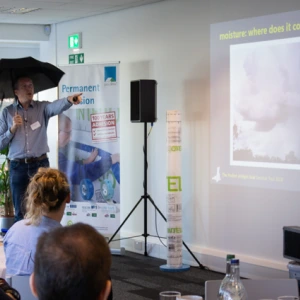Go to Section
Ireland’s Approach to Sustainable Building Practices
Ireland has made significant strides in recent years in promoting sustainability in the construction sector. Part L of the Building Regulations (Conservation of Fuel and Energy), which contains the energy efficiency standards for both new and existing buildings, is the cornerstone of Ireland’s sustainable building regulations. This includes standards for insulation and airtightness, as well as mechanical ventilation with heat recovery systems.
Some key aspects of Ireland’s policies include:
- Nearly Zero-Energy Buildings (NZEB): Ireland has adopted the EU directive requiring that all new buildings be built to NZEB standard from 2021 onwards. NZEB standard means that a building “has a very high energy performance, while the nearly zero or very low amount of energy required should be covered to a very significant extent by energy from renewable sources, including energy from renewable sources produced on-site or nearby.” This applies to all new residential and commercial buildings.
- Building Energy Rating (BER): Initially implemented in 2007, the BER system rates buildings on a scale from A to G based on their energy efficiency. A BER is mandatory for all buildings being sold or rented, which encourages property owners to improve energy performance.
- The Climate Action Plan 2021: This includes the National Retrofit Plan, which aims to retrofit 500,000 homes to a B2 BER rating by 2030, and includes comprehensive steps to retrofit existing buildings to higher energy efficiency standards.
- Financial Incentives: Financial assistance and grants are offered by the Sustainable Energy Authority of Ireland (SEAI) for energy-efficient improvements, such as for insulation, solar panels, and heat pumps. These incentives are essential for motivating builders and homeowners to follow sustainable practices. The SEAI also offer a One Stop Shop which takes a lot of the hassle away from homeowners, allowing registered private operators to manage the whole retrofit process. Along with this, the government also recently announced a low interest loan scheme for retrofit.
- Guidance Documents: The ‘Improving Energy Efficiency in Traditional Buildings’ guide from the Irish government provides detailed information for specifiers and installers when undertaking the retrofit of traditional buildings, promoting the use of 'moisture open' solutions, while taking the embodied carbon of building materials into consideration.

The UK's Approach to Sustainable Building Practices
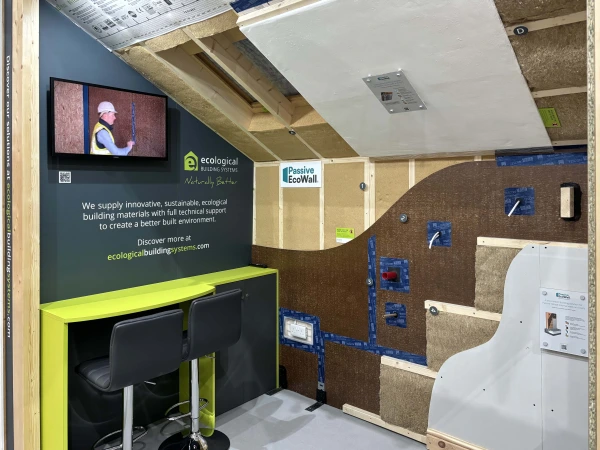
The UK has also prioritised sustainable building practices through a series of regulations and initiatives. The UK government’s strategy is detailed in documents like the Building Regulations Part L (Conservation of Fuel and Power), which sets standards for the energy performance of new and existing buildings, and in England, the Future Homes Standard. In 2023, the Scottish government also revealed plans to introduce new minimum environmental design standards for all new buildings, equivalent to the Passivhaus standard, while from 2021-2022, the Welsh government provided £250million in funding to build 20,000 low carbon homes for rent. Additionally, the UK government has introduced a new publicly available standard (PAS 2035), which provides a framework for ensuring high quality specifications and installation standards for retrofitting and thermally upgrading existing homes.
Some key aspects of the UK’s policies include:
- Net Zero Strategy: The UK government has pledged to reach net-zero carbon emissions by 2050. This goal includes retrofitting existing buildings, improving insulation, and promoting the use of renewable energy sources in both residential and commercial properties.
- Energy Performance Certificates (EPCs): Similar to Ireland’s BER, EPCs provide a rating from A to G for the energy efficiency of buildings. Introduced in 2007, EPCs are required for all properties being sold or rented, encouraging improvements in building energy performance. An EPC certificate is valid for 10 years.
- Future Homes Standard: Set to be implemented by 2025, this standard will ensure new homes produce 75-80% less carbon emissions compared to current levels. It aims to improve energy efficiency through better insulation and low-carbon heating solutions.
- Financial Incentives: Various grants and funding schemes are available, such as the Home Upgrade Grant, which supports energy-efficient home improvements via local authority funding. The UK also promotes the use of green mortgages, which offer better rates for energy-efficient homes.
- Guidance Documents: The Passivhaus Trust’s ‘Moisture and EnerPHit Good Practice Guide’ gives insights into how to manage moisture risks during retrofits, combined with recommended strategies and real-life case studies of how these strategies were executed in EnerPHit projects. Additionally, the BEIS (Department for Business, Energy and Industrial Strategy) published guidelines for internally insulating the external walls of existing buildings, which puts on emphasis on using moisture vapour diffusion open insulating materials.
Similarities between the UK and Ireland’s Approaches
Both Ireland and the UK have developed robust frameworks for promoting sustainable building practices. Here’s how both countries compare on key policies:
- Regulations: Both countries have comprehensive building regulations aimed at improving energy efficiency. Ireland’s BER and the UK’s EPC systems are quite similar and offer a clear way to assess building energy performance. Older and traditionally built properties have also been well-considered, with relevant guidance documents outlining best-practice approaches to managing moisture in such properties.
- Incentives: Both governments provide financial incentives to encourage sustainable building practices. Ireland’s SEAI grants and formerly the UK’s Green Homes Grant, now the Home Upgrades Grant, drive homeowner engagement in sustainable renovations/retrofits. However, the scope and reach of these incentives can vary.
- Long-term Goals: Both countries are committed to long-term climate goals. The UK’s net-zero emissions target by 2050 is matched by Ireland’s Climate Action Plan goals, although the specific milestones differ. The UK’s clear roadmap with the Future Homes Standard sets a strong precedent for other countries to follow, while Ireland remains focused on upskilling the construction industry in sustainable building.
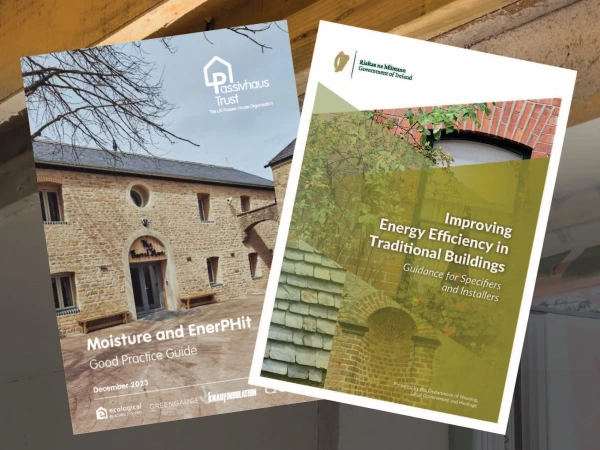
Conclusion
Government involvement in promoting sustainable building practices is crucial for tackling climate change, improving energy efficiency, and ensuring the sustainability of urban and rural areas. Despite the difference between the UK and Ireland’s approaches, both countries share common objectives and strategies in achieving net-zero carbon emissions within the construction industry.
To achieve these targets, the choice of natural building materials will be key for both countries. Due to their lower embodied carbon, breathability, and biodegradability at the end of their life-cycle, natural materials and lower carbon forms of construction have a vital role to play in the creation of a more sustainable built environment. This is reflected in both the Irish and UK guidance documents ‘Improving Energy Efficiency in Traditional Buildings’ and the ‘Moisture and EnerPHit Good Practice Guide,’ which both specifically refer to opting for breathable materials with lower embodied carbon.
Whole life carbon assessment for buildings will be crucial to address the embodied carbon blind spot within industry, which to date, is primarily energy-focused. The proposed Building Regulations amendment, Part Z, of the UK Building Regulations will go some way to addressing this shortfall. In an Irish context, the Irish Green Building Council is developing a national ratings tool, INDICATE, to measure the embodied carbon of projects. This will enable an acceleration in the integration of Whole Life Global Warming Potential/Carbon (WLC) into regulation, government policy and industry.
In closing, it is also positive that in an EU-wide context, the recently recast Energy Performance of Buidlings Directive (EPBD) means all new homes in Europe must meet binding embodied carbon reduction targets and produce zero on-site emissions by 2030.
Find out more about the range of natural insulation provided by Ecological Building Systems.
Alternatively, sign up to one of our free training courses to learn how to build better.




